Answers to the most common questions about a sourdough starter. How do I make one from scratch? Why isn’t it growing? Does it matter what flour I use? A list of answers and troubleshooting found below!
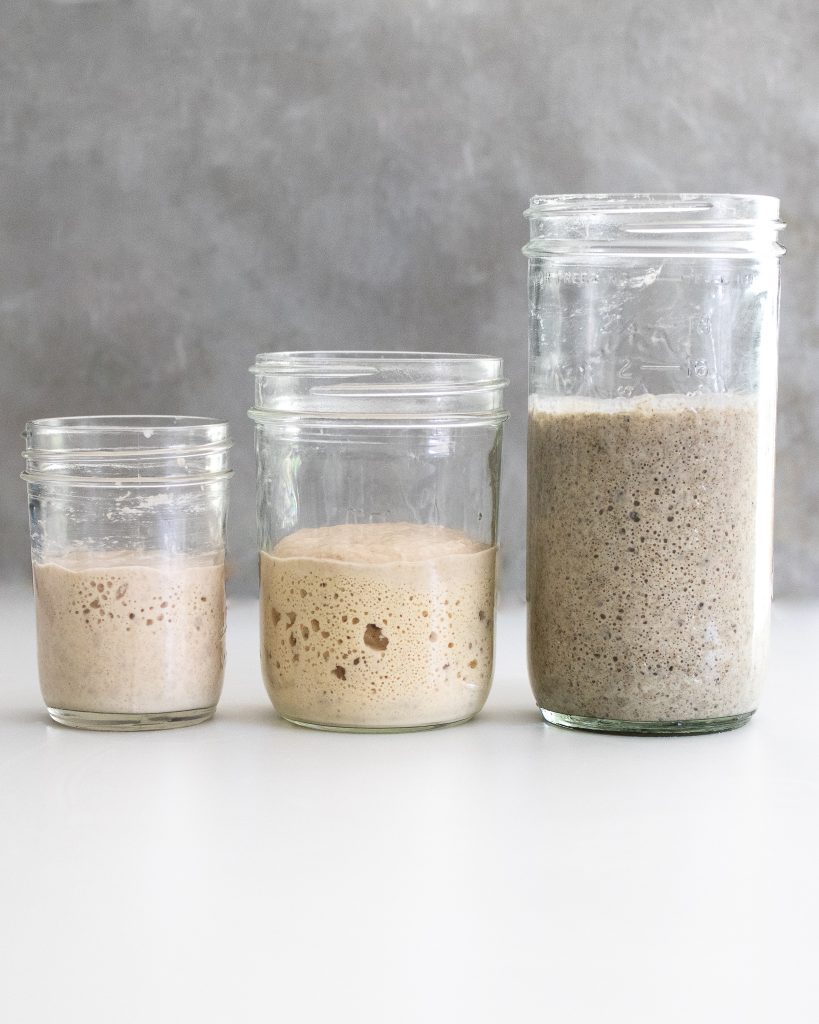
Troubleshooting a sourdough starter
If you’re reading this, you probably already have a sourdough starter and have some questions about it. If you don’t already have a sourdough starter, getting your hands on some is easy – you can take a dollop from a friend’s starter, active dried starter, or make your own (I teach you how to do that in my book).
Having a strong, active sourdough starter is the most important building block of making amazing sourdough bread. This guide is intended to be a place you can come back to again and again as needed. I’ve compiled the most common questions I’ve received about starters and gave the answers a home right here. I hope this guide can be a helpful hand in making a sourdough starter EASY, ENJOYABLE, UNDERSTANDABLE, and of course…DELICIOUS!
Looking for sourdough bread FAQ’s?
**If you are confident in your active sourdough starter and have questions more about the bread making process, visit my Sourdough Bread Troubleshooting Guide.
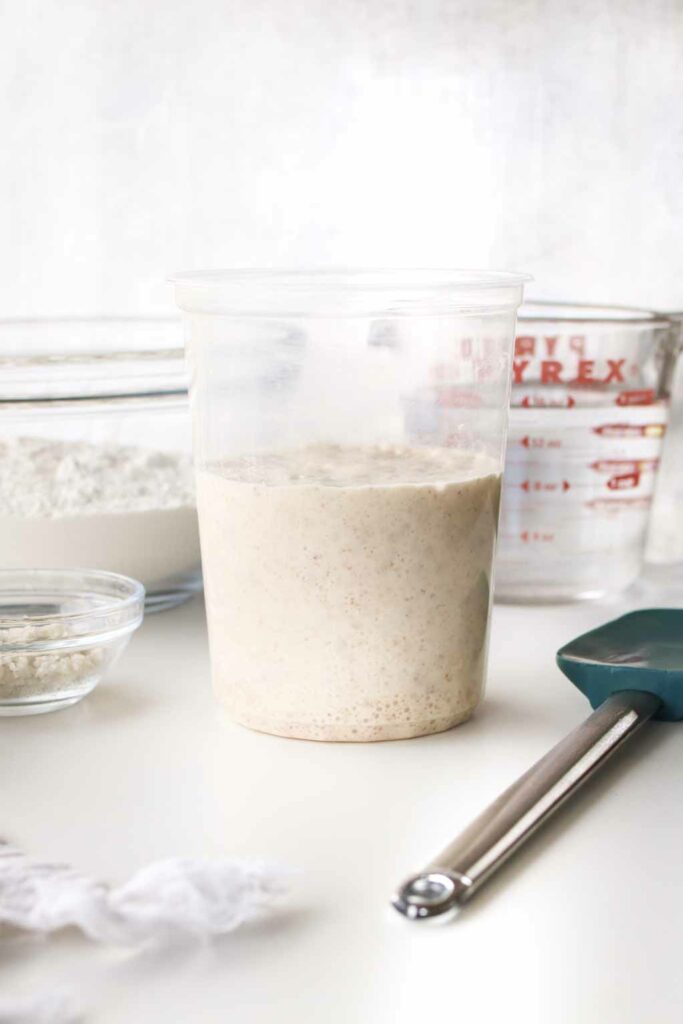
I’ve organized this guide in a series of subtopics to help you navigate. You can always do a [Command+F] on a Mac, or [Cntrl+F] on a PC as a shortcut feature to help you find some keywords quickly. Otherwise, I hope these subcategories help guide you through the sourdough starter journey. If you still have a question that you don’t feel was answered below, feel free to leave a comment at the bottom of this page and I will answer it there!
TOPICS:
1. Basics & Getting Started
2. Maintaining
3. Beyond Maintaining
Let’s dive in…
Sourdough Starters: Basics & Getting Started
What is sourdough starter?
Sourdough starter is a wild, natural form of yeast – the leavening agent we use to make bread rise. By combining flour, water, & time, the bacteria found on flour and in the environment work together to produce acids and carbon dioxide. As it ages and is rejuvenated with more flour and water, it becomes mature and active enough to create a slow rising bread with a crusty exterior, soft airy interior, and slightly tangy flavor we know and love as sourdough. Plus, once you have a starter, you can have it for life. You don’t have to create a new starter every time you make bread.
How do I make a sourdough starter from scratch?
Making it is easy; it just requires time. You combine equal parts of flour and water, and feed it every day for 10-14 days, until the starter is consistent and active. From there it’s easy to maintain by storing it in the fridge and feeding every few weeks, or prior to baking (whatever comes first). A timeline with specific instructions is found in my book. Or you can reactive dried starter with just a couple feedings and be ready to make bread in just 2-3 days.
How do I feed my sourdough starter? What “ratios” should I use?
Feeding just means mixing together sourdough starter, unbleached flour, and water. There are several popular ratios that you can follow:
1:1:1 – One part starter, one part flour, one part water (example: 20 grams starter, 20 grams flour, 20 grams water). This ratio is preferred if you’re just starting out or if your starter is really weak and needs to be strengthened again.
1:2:2 – (example: 20 grams starter, 40 grams flour, 40 grams water) This is the most common ratio I use.
1:5:5 – (example: 20 grams starter, 100 grams flour, 100 grams water) This can be used when your starter is really strong and lively. It helps stretch your starter so you need much less of it to feed.
Feeding using these ratios will mean you need to remove a portion of the starter, simply just to keep them at smaller more manageable amounts. This extra portion that you remove is often referred to as “discard”. It’s not bad or unusable, it’s simply just more than you need. More on how to use this “extra” or “discard” below in a separate question.
Do I have to use scale?
No, but it can be very helpful. I used to think using a scale was a lot more work…until I actually started using one. Not only does it help you stay more consistent and is a much more accurate gauge of measurement, but it’s actually a lot easier. With sourdough, your eyes and hands are your best indicator, but using a scale is a very helpful baseline. Again, not mandatory though. Because your eyes and hands are your best indicators, you can also use normal cup measurements and tweak from there as well.
This plastic scale is inexpensive but still reliable quality and this glass scale wipes clean very easily and is more heavy duty. I own both and love them.
What kind of flour should I use to feed my starter?
Unbleached flour is always best for sourdough. The chemicals in bleached flour are a deterrent for starters. It breaks down all the healthy bacteria that makes sourdough starters so strong.
Unbleached bread flour is high in protein and my go-to flour choice. It gives the bread strength and a nice soft chewy texture. I also accompany it with a small portion of rye flour. Rye flour is low in gluten and has bacteria that sourdough thrives off of. Unbleached all purpose flour also works.
You can also alternative flours, including Kamut flour and gluten free flour. I recommend feeding your starter with the same flour consistently as your starter begins to get used to its “identity”. It’s fine if you are out of a kind of flour and feed it with a one off now and then, but just as a general rule, it’s ideal to keep it consistent.
When is it ready to make bread with?
I like to describe sourdough starters as either being in an active state or a dormant state. Both states are “alive”, and technically you can use your sourdough starter in any state, but you get the best results when the starter is in its most active state.
To get a starter in an “active” state (you’ll also hear it referred to as preparing a “leaven”), feed it with the ratios described above, and then wait 6-12 hours. It needs fresh food (flour and water) and time to become “lively and active”. It should have at least doubled in size and has gas bubbles built up. This active state is called your leaven, or in other words, starter ready to make bread with.
You can also do the float test to check, which is placing a dollop of starter in a bowl of room temperature water. If it floats, it’s a sign that its ready and active enough! Doubled in size and gas bubbles are great indicators enough as is though.
As time goes on, you’ll see the sourdough starter begins to sink down again. This is coming out of its active state. The built up gasses are now deflating and while you can still use it in bread, its lack of strength and gasses built up will prevent you from achieving the best rise in your bread, or it may just take longer to rise. But still fine to use, especially if you have a generally active starter over all!

Sourdough Starters: Maintaining
How often should I feed my sourdough starter?
Sourdough starters will last unfed on a countertop for 3-7 days, depending on how warm it is. One way to slow down its fermentation is by storing it in the fridge, where it can typically last about a month before needing to be fed. I typically keep mine in the fridge, unless I know I’m going to be baking again within a few days.
If you are doing several feedings in a row to either create a starter from scratch or revive a dormant starter, it’s best to feed starter’s when they are at their “peak”, meaning they’ve reached maximum growth before starting to sink down again.
The more you feed your starter, the more active it will be. The more active it is, the better results you get come baking time. I typically just feed my starter about 8 hours before I plan to make bread. Sometimes that’s a couple times in a week, sometimes that means a couple times a month for me. But because I bake regularly enough, feeding it just before baking is sufficient. If you go a longer duration between baking (say, one month) it can often be beneficial to feed more than once before baking to help get it going again. Not mandatory, but you are likely to achieve better results.
Some people keep a normal feeding schedule whether they plan to bake or not. Setting a time like “every Sunday morning is feeding time” is helpful for a lot of people and they choose to feed it regardless if they are baking or not.
Can I change what flour I use to feed my starter with?
In short, yes. Your sourdough starter develops an identity and gets accustomed to the type of flour you feed it, but it’s fine to switch it up if needed. To fully merge a sourdough starter to a new flavor profile (for example converting from all purpose flour to consistently Kamut flour), it usually takes about 3-4 feedings for it to fully convert to over. (Remember, it’s still perfectly usable starter anytime in between)
Do I need to use the same kind of flour in my starter as my bread?
Nope! Technically your starter will carry an underlying flavor profile and will have a small impact on the flavor of the bread, but its such a nominal amount that I don’t see too much impact. For example if you have a starter fed with bread flour but you want to try a loaf using Kamut flour or all purpose flour, yes, you can use that bread flour starter! Some like to convert their starter over or have a few kinds going at once, but I typically just stick to one to keep it simple.
My starter is not rising or getting bubbly. What can I do?
Review these following checkpoints:
– Are you feeding it unbleached flour and water free of chlorine (some tap water carries high traced of chlorine)?
– Is it in a comfortably warm place, about 70-76 degrees? Too hot or too cold brings difficulties. Try placing it on top of a drier or in an oven with a tray of boiling water on the rack below to create a little proofing box.
– Are you following the correct ratios listed above?
– Is it the first feeding for a while? It could just need one or two more feedings to bounce back.
Why do I discard?
Discarding a portion of starter allows you to keep an amount that is not excessive to feed. While it sounds wasteful, it actually helps prevent more waste. If you do not keep ratios when you feed starter, and just add a spoonful of flour and water now and then, your starter likely will not have enough food to match what it’s able to react with and as a result will decrease how active and strong it is. If you kept proper ratios but never discarded anything, you would soon have starter coming out your kitchen windows.
Funny but true example: If you start with 10 grams starter, and feed 20 grams flour + 20 grams water, you will now have a total of 50 grams starter. SO, at the next feeding, if you don’t remove any and keep ratios, that means you’d be feeding 50 grams starter + 100 grams water + 100 grams flour, and now have 250. You can see how this would continue to escalate quickly.
If you want to bulk up your starter because you need more to make bread, or you want to make more to preserve some, or for more discard recipes, etc. then yes! You technically don’t have to discard! Just feed what you want to keep around, and for most of us, that’s a pretty small starter.
How can I reduce discard?
You can reduce discard by maintaining a small level of sourdough starter. The lower amount you feed, the less you’ll have to remove.
I have a friend who got this down to a science with her baking schedule. She set it up so that she would bake once a week. She would feed, bake, and then store the starter left behind in the fridge. The following week it was the correct ratio to then feed without discarding, use to bake, and again, left that same remaining ratio left behind in her fridge until next week when she baked again. ZERO discard.
Discard isn’t a problem for me because I LOVE using it in other recipes like muffins, brownies, pancakes, etc. But for someone who is solely into that loaf of bread each week, it’s a great method!
What can I do with sourdough discard?
SO MUCH! Not only can you use it in other yeast based recipes, but you can throw it in just about anything. In my book, Classic Sourdough, I share several recipes from brownies to tortillas that include the unfed sourdough discard. A delicious way to use up that extra stuff in the fridge. Keep your extra starter in a jar in your fridge that you add to and use it up within the month.
I also have a discard biscuits recipe and a sourdough strawberry scones recipe on my site that are SO easy and delicious!
How do I know if I’ve killed my starter?
More often than not, you have NOT killed your starter. The only instance a starter has truly gone BAD, is if it has any pink hues (that is mold) or if you see anything fuzzy. Throw it out if any of that is present. If there is a black liquid on top, that is just the acid separating, a sign that it’s VERY hungry and just needs to be fed.
Again, if you haven’t touched your starter in a while, it also could mean it just needs an extra feeding to get going strong again.
My starter changes consistency after feeding. Is that normal?
The consistency of my starter after initial feeding is a thick batter or paste. As it rises and becomes bubbly, it should turn into a thick, pourable consistency.
If you started with a thick starter and it become extremely running and more of a liquid consistency, this can typically happen if it was in a spot that was too warm. Try putting it in a location that’s about 70-76 degrees to see if that helps.
Sourdough Starters: Beyond Maintaining
How do I know how much starter to add to a recipe when adapting a normal recipe to sourdough?
You can substitute active sourdough starter for any favorite yeast recipe that calls for instant or active dry yeast. Typically about 100 grams of sourdough starter equates to 2 1/4 tsp yeast, which is one packet of yeast, and usually equates to about 1 loaf of bread, or 3-4 cups of flour. Keep in mind that rising time will be different than usual, as sourdough starter takes about 2-3x longer to rise than when using packaged yeast.
You can also add sourdough starter to any baked good recipe – cakes, muffins, pancakes, etc. These are often referred to as “discard recipes” because you get to use the starter in its unfed, or dormant state. No need to feed it to make it active and bubbly, so it’s very easy! I have a lot of our family favorite discard recipes in my book, Classic Sourdough. Because starter is just a combination of flour and water – that’s really all that you’re adding to a recipe. When you consider adding it to muffins for example, just replace the amount of flour and water in the recipe for the equal amount you are adding through starter. This works pretty well with most recipes, but keep in mind that the consistency of starter is a bit different because it’s been sitting longer, so you may need to add more or less liquid to get to the consistency called for.
Adding sourdough starter to baked goods makes them incredibly delicious! Usually it doesn’t make them tangy, but gives it a fantastic texture and underlying richer flavor.
How can I preserve my starter?
Preserving starter is easy and very smart to do. If you go out of town for a lengthy time, take a baking break in the summer, or accidentally pour all of your starter into a recipe without reserving some (GUILTY! I have definitely done that before!) it’s nice to have some back up. All you do to preserve starter is to DRY it. When sourdough starter is in its fed, active bubbly form, take a portion and spread it out onto a piece of parchment paper. Spread it out so it’s about paper thin. Wait for it to dry COMPLETELY, about 24-48 hours. It should flake off. Keep it stored in an airtight bag and store it in a cool dry place or a freezer. It’ll last for typically at least one year.
Read these reactivating instructions when you’re ready to get it going again. It’s really easy to get it back to life!
What’s the best way to gift sourdough starter to a friend?
Giving sourdough starter to a friend is one of the best gifts! It’s unique, thoughtful, and personal. You can either put some dried starter in a cellophane gift bag and tie it with a ribbon, or put some of your own active starter in a small mason jar, tied with a ribbon. The dried version is nice because they don’t feel obligated to keep it going right away if they’re not ready to jump in, but the active version is nice as well because it’s already ready to go!
Give it as is, or accompany it with a loaf of your own homemade sourdough bread!
If these tips helped, a comment below would mean a lot. Also feel free to tag @loskitchenco on Instagram in your sourdough creations! I love seeing you guys use these tips in action!


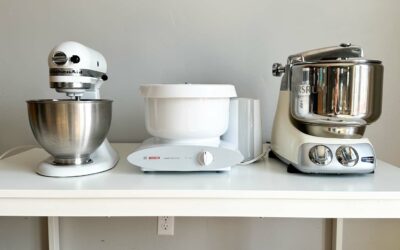
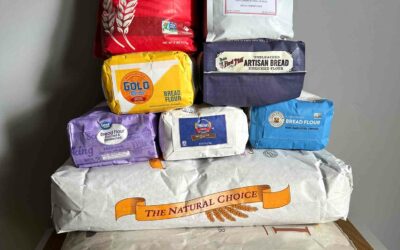
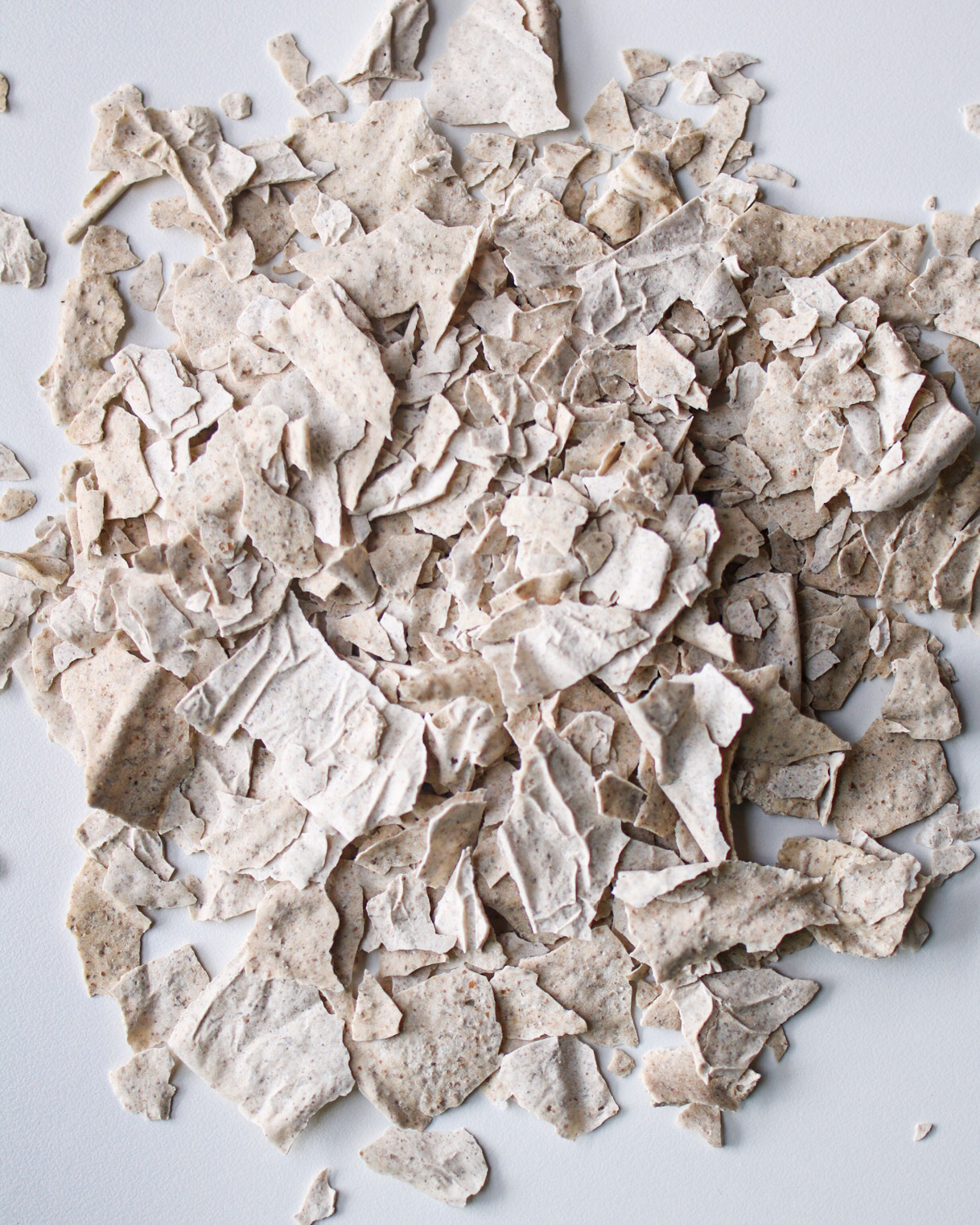
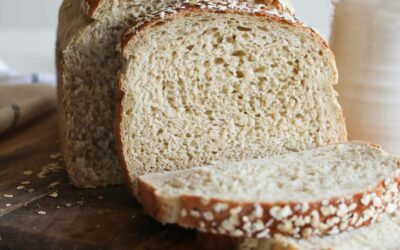
Love all of these tips! You made it so easy to understand.
Oh I’m so happy to hear that Katie, thank you! Happy baking!